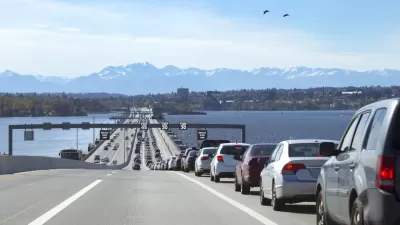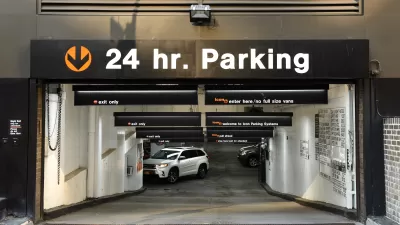"Next Stop Equity" evaluates the fairness of public transit service allocation and pricing in the Toronto, Canada region, and recommends policy reforms to better achieve social equity objectives.

Next Stop: Equity – Routes to Fairer Transit Access in the Greater Toronto and Hamilton Area, a York University study identifies ways to understand and evaluate transit equity so transportation and housing policy decisions can benefit the greatest number of transit users. Instead of focusing on equality, where everyone is treated the same, transit equity recognizes that people have different needs, situations and challenges that require different responses.
Widening gaps between affordable housing and employment opportunities have converged to make transit service disparities especially severe in suburban areas. Overall, the historic lack of transit investment means many living in the “inner ring” suburbs of Toronto must either have access to a car or find a home somewhere else.
Transit, as target for substantial investment by multiple levels of government, has huge potential to balance out social inequalities. It can connect underserved neighbourhoods to employment centres, enhance mobility and utilize subsidies and other fare innovations to encourage ridership. Transit is quite literally a vehicle for providing access to the community, economy and services that make living a fulfilling life possible.
But the discussion needs to depart from the current situation, where politicians fight over limited funding, change plans mid-stream and build new lines that continue to primarily assist commuters traveling to and from downtown at rush hour.
Research for Next Stop: Equity relied on extensive stakeholder consultations, case study research and an analysis of fares across the 10 regional transit agencies. The study makes 18 recommendations for achieving a more equitable regional approach including:
- developing a GTHA-specific definition of equity that recognizes the diverse needs of the region’s residents, to guide future planning;
- creating a consistent regional framework for transit fares, including discounted passes for low-income residents and more broadly defined groups of students;
- implementing land use planning policies to acknowledge and begin to counteract the displacement of residents created by rising property values along new or improved transit lines;
- ensuring new development near transit stations does not result in a net loss of affordable apartments or displace vulnerable residents;
- augmenting service to employment destinations, especially those trips made in off-peak hours, through a further analysis of evolving commuting patterns, especially outside the downtown core;
- enhancing public consultation techniques, especially in lower income and suburban communities; and,
- improving customer service, including vehicle and station comfort and cleanliness.
FULL STORY: Next Stop: Equity – Routes to Fairer Transit Access in the Grater Toronto and Hamilton Area

Trump Administration Could Effectively End Housing Voucher Program
Federal officials are eyeing major cuts to the Section 8 program that helps millions of low-income households pay rent.

Planetizen Federal Action Tracker
A weekly monitor of how Trump’s orders and actions are impacting planners and planning in America.

Ken Jennings Launches Transit Web Series
The Jeopardy champ wants you to ride public transit.

Crime Continues to Drop on Philly, San Francisco Transit Systems
SEPTA and BART both saw significant declines in violent crime in the first quarter of 2025.

How South LA Green Spaces Power Community Health and Hope
Green spaces like South L.A. Wetlands Park are helping South Los Angeles residents promote healthy lifestyles, build community, and advocate for improvements that reflect local needs in historically underserved neighborhoods.

Sacramento Plans ‘Quick-Build’ Road Safety Projects
The city wants to accelerate small-scale safety improvements that use low-cost equipment to make an impact at dangerous intersections.
Urban Design for Planners 1: Software Tools
This six-course series explores essential urban design concepts using open source software and equips planners with the tools they need to participate fully in the urban design process.
Planning for Universal Design
Learn the tools for implementing Universal Design in planning regulations.
Heyer Gruel & Associates PA
Ada County Highway District
Institute for Housing and Urban Development Studies (IHS)
City of Grandview
Harvard GSD Executive Education
Toledo-Lucas County Plan Commissions
Salt Lake City
NYU Wagner Graduate School of Public Service





























